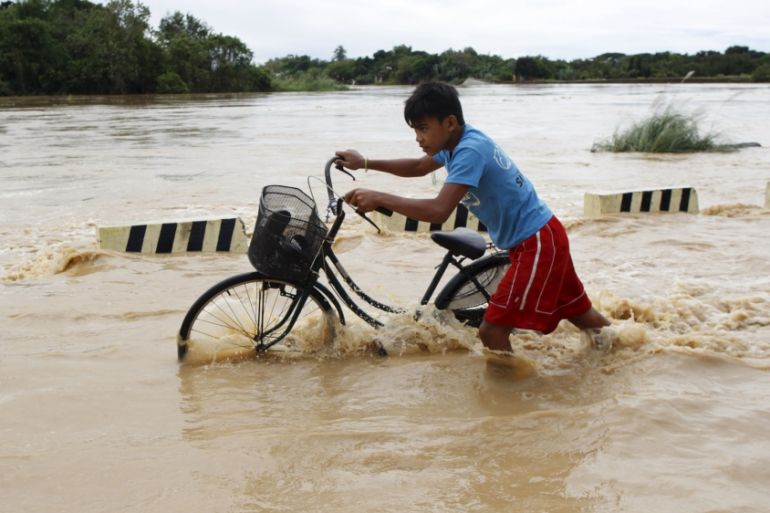State of calamity declared in Philippines after storms
At least 35 people killed after typhoon and subsequent tropical depression cause widespread flooding in the Philippines.

Heavy rains continue to pummel the Philippines, threatening to aggravate flooding that has prompted the government to declare a state of “national calamity”.
The death toll after a week of devastating weather has risen to 35, according to confirmed reports from national and local disaster monitoring agencies.
Keep reading
list of 4 itemsAre seed-sowing drones the answer to global deforestation?
Rainfall set to help crews battling wildfire near Canada’s Fort McMurray
How India is racing against time to save the endangered red panda
Tropical depression “Onyok” weakened on Saturday into a low pressure area, but continued to bring rains to the central Visayas islands and Mindanao, the main southern island, according to government weather authorities.
Cold monsoon winds blowing from the northeast brought rains to Luzon, the main northern island, where large farming communities have been submerged in mostly waist-deep floods from Typhoon Melor, which hit at the start of the week.
Meanwhile, the state weather bureau forecasted cloudy skies with moderate to occasional heavy rains and thunderstorms over Mindanao, Bicol region, Central and Eastern Visayas, and the provinces of Aurora and Quezon.
These may trigger flash floods and landslides, according to the Philippines state news agency (PNA).
![Residents ride on motorcycle taxi to cross a flooded road after heavy rain at Candaba town, Pampanga province, north of Manila, December 17 [Romeo Ranoco/Reuters]](/wp-content/uploads/2015/12/19952440a8504c45808aad6da286361d_18.jpeg)
President Benigno Aquino declared a state of “national calamity” to speed up relief and rehabilitation efforts in areas hit by Typhoon Melor and to control the prices of basic commodities, the Philippines Star reported.
“All departments and other concerned government agencies are hereby directed to coordinate with, and provide or augment the basic services and facilities of affected local government units,” Aquino was quoted as saying.
Aquino also directed law enforcement agencies, with the support of the Armed Forces of the Philippines, to ensure peace and order in affected areas, the Philippines Star added.
In 2013, a typhoon known as Haiyan wiped out entire communities in the central islands, killing more than 6,000 people, and displacing millions; entire towns were flattened on the central islands of Leyte and Samar.
The Philippines, which sees an average of 20 typhoons a year, is planning to build typhoon-resilient structures and to relocate residents living in danger zones to areas considered safer based on studies by local and international organisations.